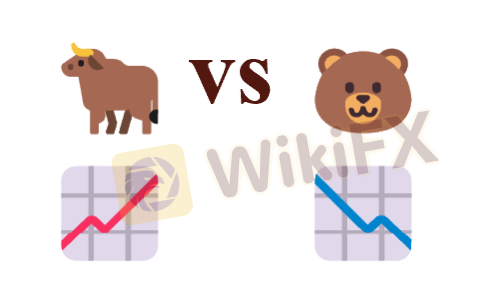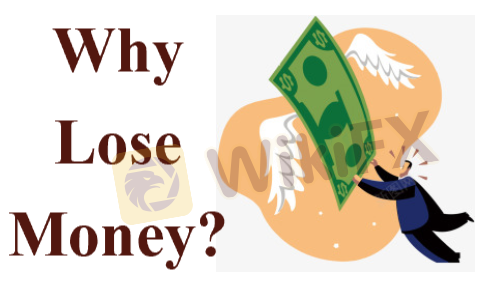Welcome to the Forex Encyclopedia Channel of WikiFX, a professional forex knowledge-sharing platform. In this article, we'll talk about the meaning and significance of currency pair correlations in foreign exchange trading and how to take advantage of them.
With this knowledge under your belt, you'll be able to avoid the pitfalls that plague so many new traders and put yourself in a position to succeed.
What Is A Currency Pair Correlation in Forex Trading?

In forex trading, currency pair correlation measures how two currency pairs move relative to each other. It assesses whether they tend to move together, move in opposite directions, or have little connection, aiding traders in decision-making.
Two separate currency pairs may be correlated positively or negatively:
Positive correlations mean the two currency pairs tend to move in the same direction.
Negative correlations indicate that the two currency pairs will tend to move in opposite directions.
Opportunities to increase profits or reduce loss exposure can be found in correlations between currency pairs. You can either open another position to maximize your profits or hedge your current exposure in case market volatility increases if you are confident that one currency pair will move alongside or against another.
However, it's possible to make larger losses or have your hedging be less successful than expected when trading currency correlations if your predictions are off or the market reacts unexpectedly.
When comparing two different currency pairings, the strength of a correlation is affected by market conditions, including the time of day and the volume of trades being conducted. For example, currency pairings involving the US dollar tend to see more volume between 12 a.m. and 9 a.m. (UK time), when the US market is open, whereas pairs involving the Euro or the Pound see higher volume between 8 a.m. and 4 p.m. (UK time) when the European and British markets are open.
Why Do Currency Pair Correlations Matter?

To improve one's success in foreign exchange (Forex) trading, an awareness of currency correlations is essential. What follows is an explanation of the matter, broken down into three reasons:
① It Can Manage Your Risk
The absence of effective correlation control can be a major source of risk in a forex strategy. The EURUSD and USDCHF currency pairs, for instance, typically move in opposing directions. There is a strong correlation between an upward trend in EURUSD and a downward trend in USDCHF. Therefore, purchasing position in both pairings would be self-defeat, potentially resulting in catastrophic losses.
② It Can Hedge Your Positions
Taking a position in a pair with which you expect a negative correlation is an excellent way to reduce your exposure to market fluctuations and potential losses. If you go “long” on the EUR/USD and it starts to move against you, you can protect your investment by buying the USD/CHF, which has a negative correlation to the EUR/USD.
③ It Can Diversify Your Portfolios
Correlations in forex currency pairs aid in portfolio diversification and hedging. Diversification has been recognized for a very long time as a crucial technique to reduce losses.
④ It Can Multiply Your Profits
When employing currency pair correlations, you have the opportunity to double down on trades, maximizing your earnings. Frequently, the EURUSD and GBPUSD pairs exhibit a high correlation. The GBPUSD largely mirrors the EURUSD. Therefore, due to leverage, going long on the two pairings will result in more earnings.
How to Calculate Currency Pairs Correlations?
Changes in the economies, monetary policies, and political and social climates of individual countries can have large-scale effects on the correlations between different currency pairs. Correlations between different currencies can get stronger, weaker, or even completely random.

The financial sector uses a +1 to -1 scale in a forex correlation table to measure and present correlations, where:
. +1 refers to a fully positive correlation,which indicates that the price of two currency pairs is highly likely to move in the same direction in the long run.
. -1 refers to a fully negative correlation,which indicates that the price of two currency pairs is highly unlikely to move in the same direction in the long run.
. 0 refers to no correlation.Therefore, if there is no relationship between currency pairs, then the behavior of both pairings will be entirely random and unrelated to the other.
What Are the Most Highly Correlated Currency Pairs?
Currencies that have close economic relationships tend to have the highest correlations with one another. For example, the Euro and the British Pound are highly intertwined for a number of reasons, including their closeness to one another and their reputation as two of the most widely held reserve currencies in the world.
See some of the most commonly traded currency pairs are included in the table below.
Current correlation coefficients for the most actively traded currency pairings are listed in the table below:

Pairs with the same currency serving as the base or counter currency tend to have higher correlations, as can be seen above. This is to be expected, as these pairs are influenced by the same underlying factors. Among the best forex correlation pairs are EUR/USD and EUR/CHF, with a positive correlation of 0.91, and GBP/JPY and EUR/GBP, with a negative correlation of 0.85 (since the British Pound is the base currency in one pair and the counter currency in the other). There is also a 0.91 positive correlation between the EUR/USD and the AUD/USD.
How to Use Currency Pair Correlations in Forex Trading?
To maximize your earnings and minimize your losses while trading foreign exchange, it is crucial that you learn to use currency pair correlations. Here are some useful strategies for your reference:

① Use It to Manage Risk
Correlation can do is keep you out of a pair of mutually exclusive trades. Take the USD/CHF and EUR/USD pairs as an example. Knowing that these two currencies often move in opposite directions, you'd realize that holding long positions in USD/CHF and EUR/USD is the same as having no position at all in your portfolio. Since the EUR/USD pair is negatively connected with the USD/CHF pair, therefore, a rise in the EUR/USD will lead to a drop in the USD/CHF.
The opposite is true if we look at EUR/USD and NZD/USD, where a positive correlation makes trading one pair effectively the same as doubling your stake in both.

② Use It to Anticipate Price Movements
One currency pair's price movement can be used as a forward indicator of the other's when the two pairs are highly connected. Any sudden shift in one of the positively linked pairings will almost certainly be mirrored in the other.
If you see two currency pairings that are negatively correlated, and one of them experiences a major upward price reversal, you should expect the other currency pair to perhaps have a downward reversal.
③ Use It to Diversify Investment Portfolios
The AUD/USD and the EUR/USD are not perfectly correlated currency pairs. Thus, you can spread your bets among a wider pool of similar pairs while maintaining your fundamental directional bias.
A pessimistic stance on the US dollar could be signaled by purchasing one unit each of the EUR/USD and AUD/USD pairs rather than two units of the EUR/USD. The imperfect correlation between the two pairings will allow you to boost diversity and reduce risk by a little margin. As a corollary, if the dollar were to rally, the other currencies might not be greatly impacted by the policies of their respective central banks.
④ Use It to Hedge Your Positions
One further tool at a trader's disposal is the employment of alternative point or pip values. The EUR/USD and USD/CHF pairs need another look.
There is almost no positive correlation between the two currencies, although a $10 ( a standard lot of 100,000 units)change in the EUR/USD is worth a $9.24 change in the USD/CHF. This means that traders can use the USD/CHF pair to protect themselves from EUR/USD fluctuations.
A Real Example
In June 2022, both the British Pound to US Dollar (GBP/USD) and the Euro to US Dollar (EUR/USD) currency pairs were in a downward trend, with a greater downside pressure observed on the British Pound and the Euro.
On June 2nd, the UK released unfavorable PMI data, causing GBP/USD to rapidly decline by 1.5%. Given the positive correlation between the Euro and the British Pound,a trader, Louis, anticipated that EUR/USD might also experience downward pressure. Consequently, he decided to short EUR/USD. As expected, over the next two days, the Euro to US Dollar exchange rate also saw a decline of approximately 1.2%.
Through this trading case, Louis successfully capitalized on the trading opportunity presented by currency correlation, leveraging the British Pound's decline against the US Dollar to achieve stable profits by shorting EUR/USD in line with the prevailing trend.

Conclusion
Currency pair correlation in forex trading is an important topic that is often neglected by beginners, but also by advanced traders. To be an effective trader and understand your exposure, it is important to understand how different currency pairs move in relation to each other.
WikiFX is a professional, global forex broker regulatory inquiry platform with extensive and easily-accessible data on Forex Brokers, the Forex Industry News, Educational Resources and more. For more forex-related information and resources, please visit the WikiFX website or download WikiFX App now.

you also like

Differences between Bullish and Bearish Markets in Forex Trading
Dive into the dynamics of forex trading by understanding the uprising bullish markets and the falling bearish markets.

Differences between Dealing Desk & No Dealing Desk Forex Brokers
Learn about Dealing Desk & No Dealing Desk Forex Brokers, their roles, STP & ECN in NDD brokers, along with their pros & cons.

How to Use Currency Pair Correlations in Forex trading?
Dig into Currency Pair Correlations in Forex trading. Understand their concept, influence, importance, calculation, and common pairs.

What is Forex Technical Analysis? Pro & Cons Revealed
Uncover Forex Technical Analysis. Understand its core principles, strengths and weaknesses, and how to learn and apply it in Forex trading.


















